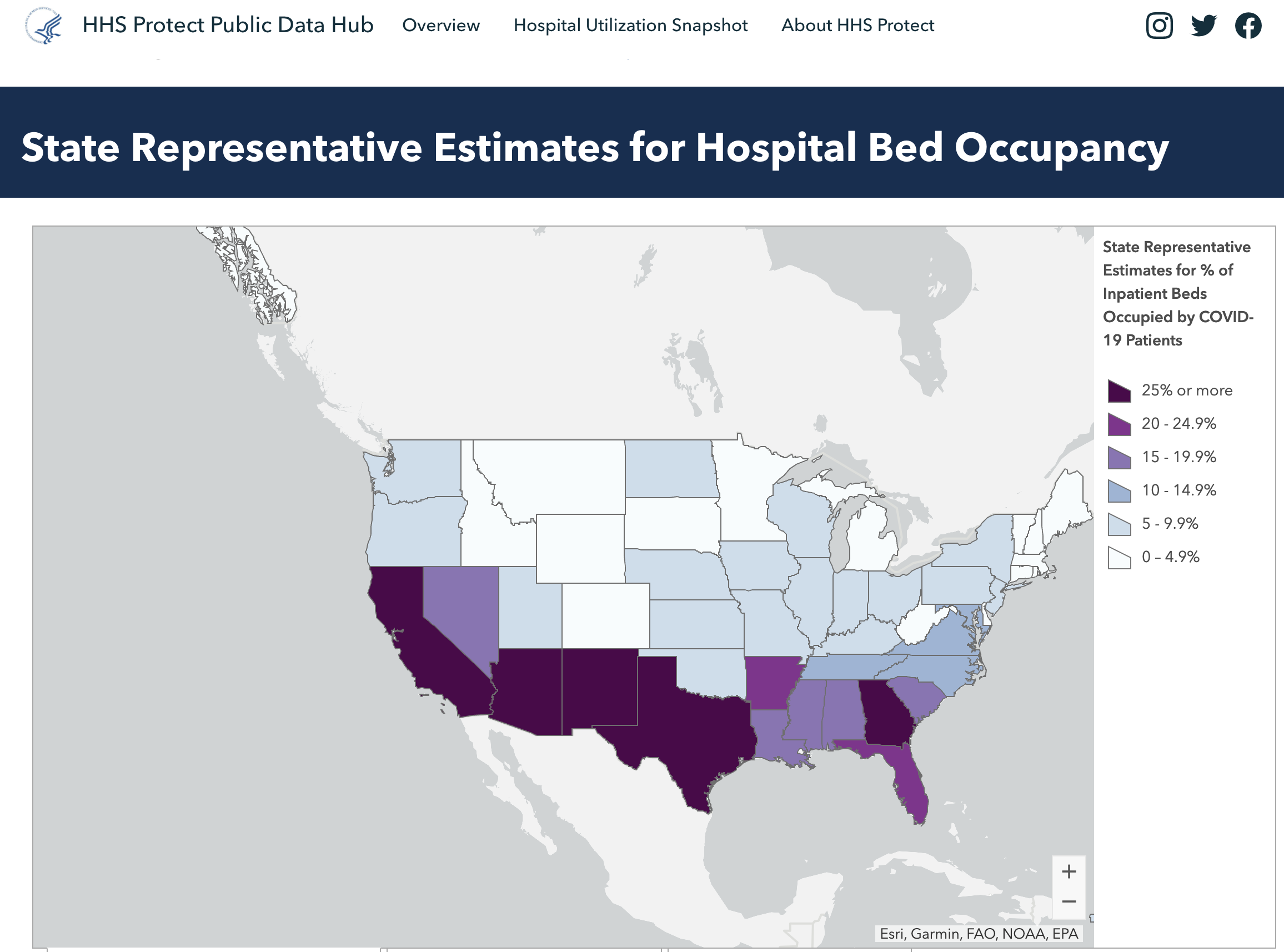“They’re just cases”

Estimate of the percent of hospital beds occupied by COVID-19 patients Source: US federal government https://protect-public.hhs.gov/pages/hospital-capacity#hospital-occupancy
One of my recurring themes in these posts is that reasonable, moral people can disagree about some aspects of pandemic management because our trade-offs reflect our values, which aren’t the same for everyone. Some people are more obsessed with “safety.” Some people are more accepting of risk. On the other hand, too many people are embracing opinions that are not fully informed by the facts.
Take the notion of “they’re just cases.” I recently had a conversation with someone who is unconcerned about the increasing number of new diagnoses of coronavirus infection in the US because “they’re just cases” (President Trump too has been dismissive of case counts in the same way.) By “just cases” they mean that having a positive coronavirus test result could be an accidental finding in people who don’t have symptoms, or who will be fine in a few days. In this way of seeing things, the number of “cases” doesn’t matter because most “cases” won’t get very sick, won’t go to hospital, and won’t die. The fact that they happened to be counted as a COVID-19 case looks bad but is of no practical significance. I presume in this world view, COVID deaths matter but cases do not.
This thought process is partly right. It’s true that most people who test positive for the coronavirus will be fine. But that doesn’t mean that increasing numbers of them is unimportant. Rising cases means the virus is spreading rather than fading away. Rising cases tells us the future 2 to 6 weeks from now is going to have more sick COVID-19 patients than we have today—because even though most “just cases” will be fine, some will not. Some percentage of all infections will lead to hospitalization. The more new cases, the more hospitalizations will eventually result.
Here’s what “just cases” actually looks like in the US this week, when we broke 4,000,000. (Courtesy of Johns Hopkins Center for Health Security, July 24, 2020)
From the first case reported in the US on January 22, it took 81 days to reach 500,000 cases and 98 total days to reach 1 million cases. From there:
1 million to 2 million cases: 44 days
2 million to 3 million cases: 27 days
3 million to 4 million cases: 14 days
The “just cases” argument dismisses this exponential growth as mere numbers on a page. However,
Newly published data from HHS (US Department of Health and Human Services) shows multiple states in these severely affected regions reporting more than 25% of inpatient hospital beds currently occupied by COVID-19 patients, including Arizona, California, Georgia, New Mexico, and Texas. (See figure at top of this post.)
So maybe hospitals a quarter full of COVID patients is an acceptable cost for the benefit of fewer social distancing restrictions. But a situation that is manageable with x number of “just cases” can become disastrous with 2x or 4x cases. There is a lag time between taking action to slow disease transmission in the community and seeing results in the hospitals. Ignoring a rising number of “just cases” is risky.
P.S. A subtext to the “just cases” argument is that testing itself is the problem, that by testing more we detect more “just cases” that could just as easily be ignored. While it’s true that testing more will yield more cases, what we’re seeing in the US today is not only a greater number of cases, but a greater percentage of positive tests. This means that the virus is indeed infecting an increasing number of people, and that the increase in case numbers reflects a true increase in prevalence.
Amy Rogers, MD, PhD, is a Harvard-educated scientist, novelist, journalist, and educator. Learn more about Amy’s science thriller novels, or download a free ebook on the scientific backstory of SARS-CoV-2 and emerging infections, at AmyRogers.com.
Sign up for my email list
Share this:



0 Comments